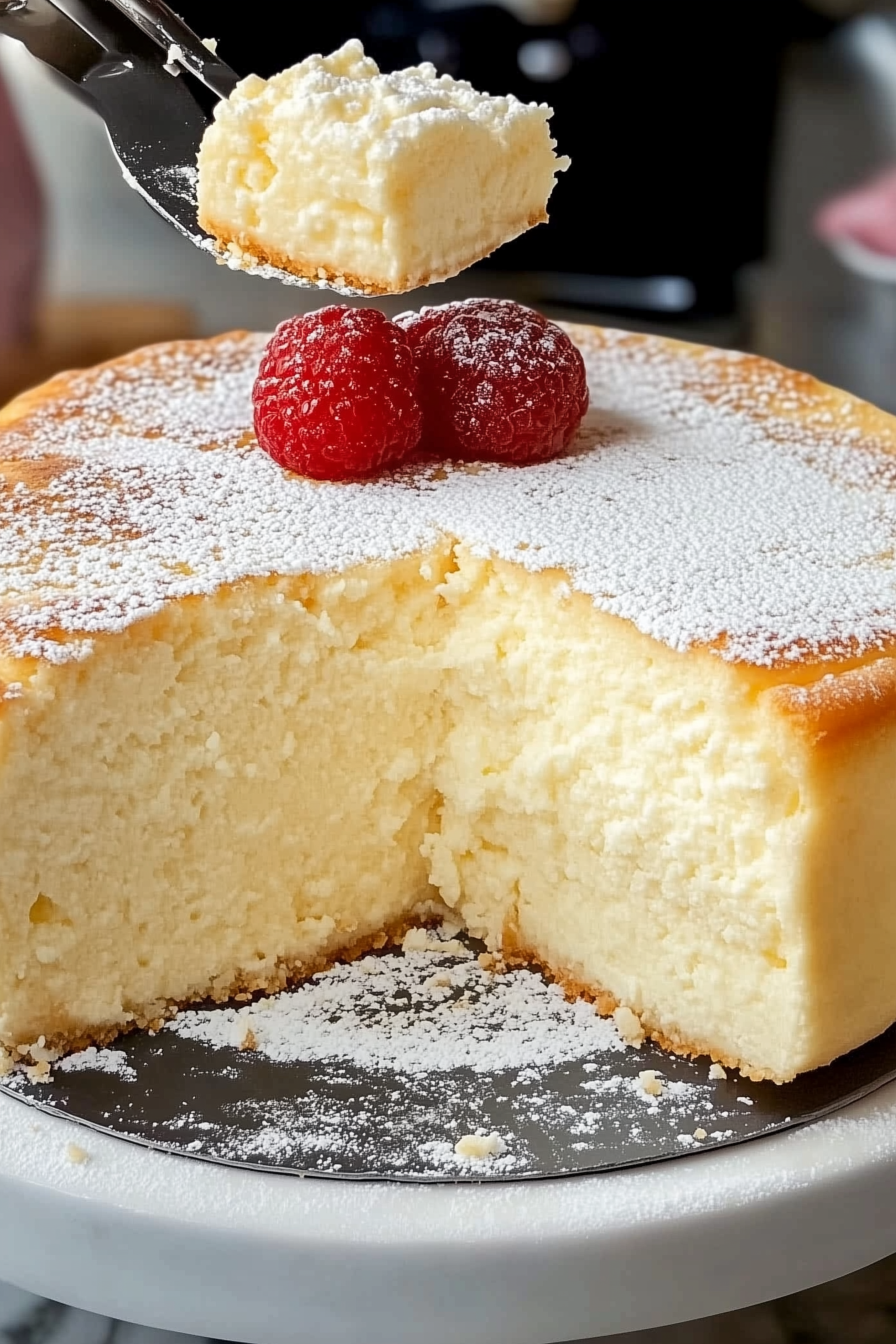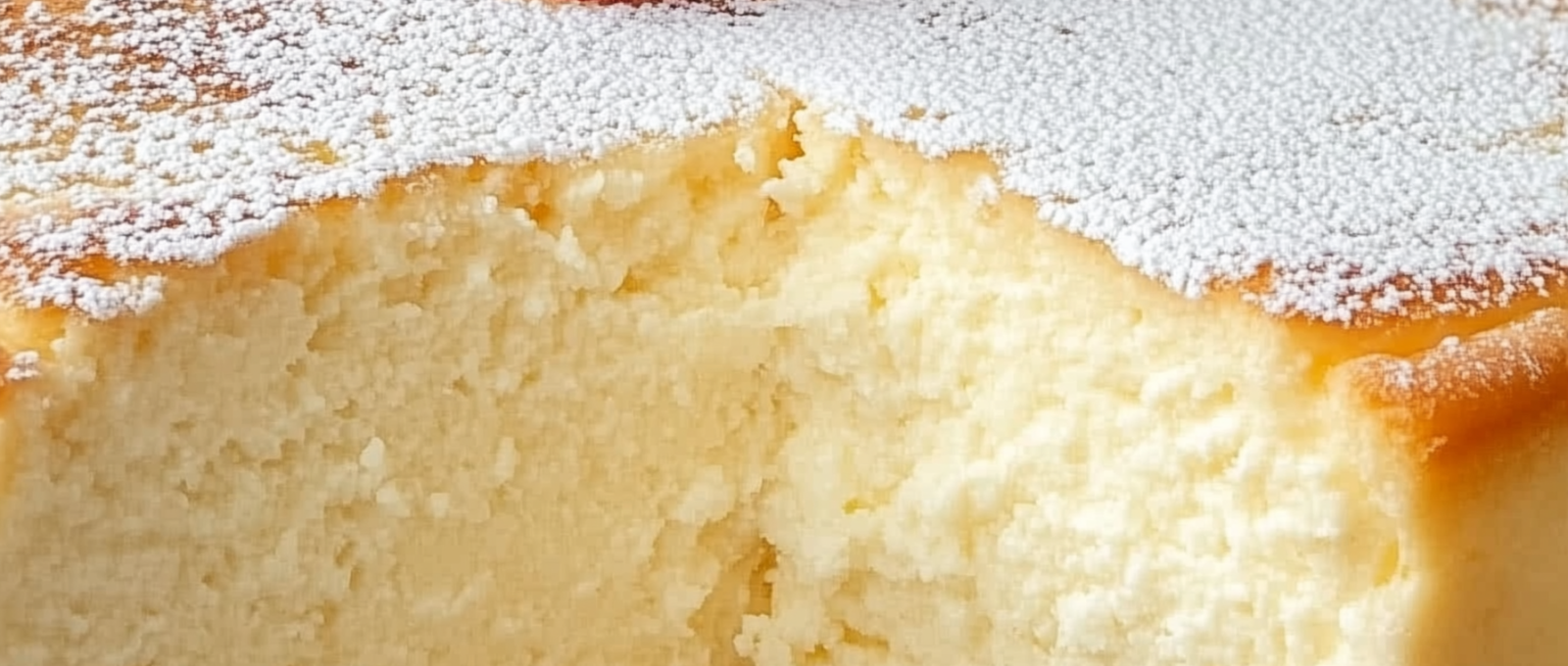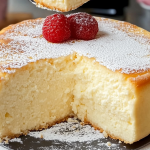
There’s something undeniably charming about a dessert that wiggles when you shake the plate. That’s the magic of Japanese Cotton Cheesecake—a cloud-like confection that’s lighter than traditional cheesecake, but still rich with cream cheese flavor. With its delicate texture, subtle sweetness, and iconic jiggle, this cake is a beautiful fusion of soufflé and classic cheesecake.
Inspired by the soft and airy desserts of Japan, this cheesecake has become a viral favorite across social media, and for good reason. Whether you’re entertaining guests, baking for a birthday, or simply treating yourself, this melt-in-your-mouth dessert is always a show-stopper.
Why You’ll Love Japanese Cotton Cheesecake
- Fluffy, melt-in-your-mouth texture unlike any other cheesecake
- Less sweet and lighter than traditional versions, making it perfect after a big meal
- Stunning presentation with its golden top and signature jiggle
- Perfect for summer or winter—serve chilled in warmer months or fresh out of the oven in cooler weather
- Made with basic ingredients like eggs, cream cheese, and flour

Ingredients
Serves 5
- ¼ cup (30 g) cake flour
- 2 tbsp (20 g) cornstarch
- ¾ cup (180 g) full-fat cream cheese (brick style)
- 2 tbsp (30 g) unsalted butter, room temperature
- 3½ tbsp (50 g) full-fat milk
- 3 large egg yolks, room temperature
- ½ tsp (2 g) vanilla extract
- 3 large egg whites, room temperature
- ⅓ cup (70 g) granulated sugar
- ½ tsp (2 g) lemon juice
- Powdered sugar, for garnish
Instructions
Step 1: Preheat and Prepare the Pan
Preheat your oven to 300°F (150°C). Line a 6-inch round cake pan with parchment paper on both the bottom and sides. This helps prevent sticking and ensures a smooth finish.
Step 2: Melt the Cream Cheese and Butter
Set up a double boiler by placing a heat-safe bowl over a saucepan of simmering water. Add the cream cheese, butter, and milk. Whisk gently until everything is melted and smooth, reaching about 130°F (55°C). Remove from heat.
Step 3: Add Yolks and Vanilla
To the warm cream cheese mixture, whisk in the egg yolks and vanilla extract until smooth and well incorporated.
Step 4: Sift and Combine the Dry Ingredients
Sift the cake flour and cornstarch directly into the cream cheese mixture using a fine-mesh sieve. Whisk until smooth, then strain through a sieve to remove any lumps for a silky batter.
Step 5: Make the Meringue
In a clean mixing bowl, add egg whites and lemon juice. Using an electric mixer, beat on high until frothy. Gradually add the sugar in three parts while beating. Continue mixing until soft peaks form—when you lift the beater, the peaks should gently fold like soft-serve.
Mix for an extra 30 seconds on low to eliminate large air bubbles.
Step 6: Combine Batters
Fold one-third of the meringue into the yolk mixture to lighten it. Then gently pour the yolk mixture into the rest of the meringue. Carefully fold just until combined—do not over-mix.
Step 7: Pour and Prepare for Baking
Pour the batter from about 5 inches above the pan to pop excess bubbles. Tap the pan lightly on the counter to settle it. Place the cake pan in a larger baking tray and add 1–2 cm of boiling water around it to create a water bath.
Step 8: Bake in Stages
Bake at 300°F (150°C) for 30 minutes. Then lower the heat to 230°F (110°C) and bake for another 30 minutes. Finally, raise the temperature to 275°F (135°C) and bake for 13–15 minutes, watching closely to prevent cracking.
Step 9: Cool Gradually
Turn off the oven and leave the cake inside with the door cracked for 15 minutes. Remove the water bath and let the cake rest in the oven for another 15 minutes to prevent shrinkage.
Cool completely on a wire rack before dusting with powdered sugar and serving.
Tips for Success
- Avoid over-beating the meringue: You want soft peaks, not stiff.
- Use a water bath: This ensures even, gentle heat and prevents the cheesecake from cracking.
- Check your oven temperature: If the cake cracks, your oven may be too hot.
- Don’t rush the cooling: Sudden temperature changes can deflate the cake.
When to Serve Japanese Cotton Cheesecake
This dessert is seasonless. In summer, chill it in the fridge and serve with fresh berries. In winter, enjoy it warm with a dusting of powdered sugar and a cup of tea. It’s perfect for birthdays, baby showers, or an elegant weekend treat.
Storage and Serving
- Store: In an airtight container in the fridge for up to 3 days.
- Serve: Best enjoyed at room temperature or slightly chilled.
- Reheat: If you like it warm, microwave for 10–15 seconds before serving.
A Japanese Dessert Worth the Effort
If you’ve never made a souffle-style cheesecake before, this Japanese Cotton Cheesecake is the one to try. It may take a few extra steps, but the result is more than worth it: soft, pillowy, melt-in-your-mouth magic that leaves everyone asking for seconds.
Japanese Cotton Cheesecake
Ingredients
- ¼ cup 30 g cake flour
- 2 tbsp 20 g cornstarch
- ¾ cup 180 g full-fat cream cheese (brick style)
- 2 tbsp 30 g unsalted butter, room temperature
- 3½ tbsp 50 g full-fat milk
- 3 large egg yolks room temperature
- ½ tsp 2 g vanilla extract
- 3 large egg whites room temperature
- ⅓ cup 70 g granulated sugar
- ½ tsp 2 g lemon juice
- Powdered sugar for garnish
Instructions
Step 1: Preheat and Prepare the Pan
- Preheat your oven to 300°F (150°C). Line a 6-inch round cake pan with parchment paper on both the bottom and sides. This helps prevent sticking and ensures a smooth finish.
Step 2: Melt the Cream Cheese and Butter
- Set up a double boiler by placing a heat-safe bowl over a saucepan of simmering water. Add the cream cheese, butter, and milk. Whisk gently until everything is melted and smooth, reaching about 130°F (55°C). Remove from heat.
Step 3: Add Yolks and Vanilla
- To the warm cream cheese mixture, whisk in the egg yolks and vanilla extract until smooth and well incorporated.
Step 4: Sift and Combine the Dry Ingredients
- Sift the cake flour and cornstarch directly into the cream cheese mixture using a fine-mesh sieve. Whisk until smooth, then strain through a sieve to remove any lumps for a silky batter.
Step 5: Make the Meringue
- In a clean mixing bowl, add egg whites and lemon juice. Using an electric mixer, beat on high until frothy. Gradually add the sugar in three parts while beating. Continue mixing until soft peaks form—when you lift the beater, the peaks should gently fold like soft-serve.
- Mix for an extra 30 seconds on low to eliminate large air bubbles.
Step 6: Combine Batters
- Fold one-third of the meringue into the yolk mixture to lighten it. Then gently pour the yolk mixture into the rest of the meringue. Carefully fold just until combined—do not over-mix.
Step 7: Pour and Prepare for Baking
- Pour the batter from about 5 inches above the pan to pop excess bubbles. Tap the pan lightly on the counter to settle it. Place the cake pan in a larger baking tray and add 1–2 cm of boiling water around it to create a water bath.
Step 8: Bake in Stages
- Bake at 300°F (150°C) for 30 minutes. Then lower the heat to 230°F (110°C) and bake for another 30 minutes. Finally, raise the temperature to 275°F (135°C) and bake for 13–15 minutes, watching closely to prevent cracking.
Step 9: Cool Gradually
- Turn off the oven and leave the cake inside with the door cracked for 15 minutes. Remove the water bath and let the cake rest in the oven for another 15 minutes to prevent shrinkage.
- Cool completely on a wire rack before dusting with powdered sugar and serving.







Leave a Comment